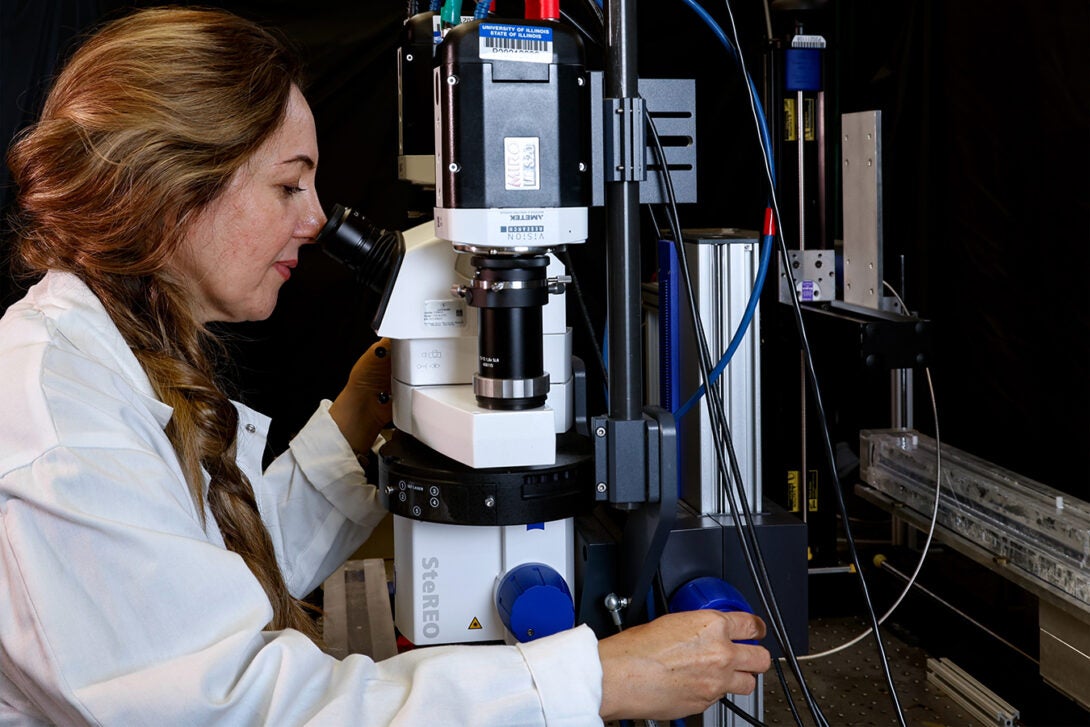Advancing elasto-inertial focusing for enhanced control in microfluidic devices

The manipulation of flow dynamics within microfluidic devices is vitalin cell detection applications. This process relies on the precise alignment of particles under flowing conditions, achieved through the controlled motion of particles across the flow using external fields such as electricity, magnetism, acoustics, or optics.
Associate Professor Parisa Mirbod is leading investigations into an alternative method known as elasto-inertial focusing. This technique leverages the balance of forces within the flow to concentrate particles along the device. Mirbod’s research is supported by a new three-year grant from the National Science Foundation CBET-Fluid Dynamics program, titled “The Role of Complex Fluids on the Flow and Instabilities of Particle-Laden Liquids.”
“We aim to pioneer novel experimental methods and numerical simulations that transcend the current limitations of microfluidic devices,” explains Mirbod. “Our objective is to gain a deeper understanding of flow control within devices, particularly when dealing with diverse, complex fluids and particle-laden polymers encountered in various applications.”
Addressing existing challenges in bio and microfluidic devices, Mirbod underscored the need for precise flow control across various flow rates. The proposed research endeavors to develop a novel method to regulate flow dynamics, potentially leading to groundbreaking advancements in inertial focusing techniques.
“The impact of this research extends beyond microfluidic applications to encompass diverse industries, including inkjet printing, and even oil recovery, “she said. “We utilize cutting-edge techniques to investigate flow behavior in our proposed devices. These include particle image velocimetry conducted in our lab and magnetic resonance imaging at Rutgers University.”
Furthermore, Mirbod’s commitment to STEM education involves outreach initiatives targeting underrepresented student groups, focusing on fostering diversity and inclusion in scientific pursuits.
“I am dedicated to nurturing the next generation of scientists and engineers through K-12 outreach activities and specialized courses for undergraduate and graduate students,” said Mirbod. “By equipping students with the skills to tackle novel simulations and experiments, we aim to drive innovation and inspire future leaders in STEM fields.”
To learn more about Mirbod’s research and educational initiatives, visit The Mirbod Lab.